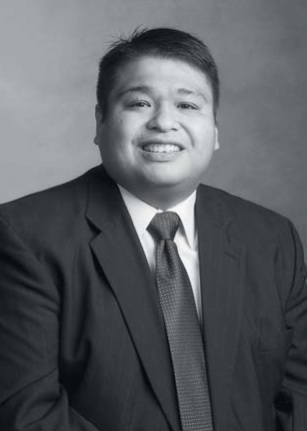main content Empowering Native Americans
Open gallery

On a warm summer night in Oklahoma, members of the Seminole Nation gathered for a celebratory stomp dance. Men wore blue jeans and baseball or cowboy hats adorned with eagle, hawk, and crane feathers. A tribal elder began to sing, and the other men chanted the chorus in their native tongue. Women, dressed in skirts and blouses designed with Seminole patchwork, kept the rhythm with shell shakers fastened to their legs.
As he watched the dancers shuffle and stomp around the fire, 5-year-old Jeremy Aliason’s eyes began to droop. His grandmother wanted him to lie down, but his great-grandfather, a stoic man of few words, told her to let the boy stay up and learn about his culture.
“That was a big deal for me,” says Aliason. “I paid extra attention to the songs and stayed awake until the sun came up. Our dances were traditionally held at night to protect and preserve our heritage.”
Aliason learned a lesson in cultural pride that night. Today, as executive director of the National Native American Bar Association in Oklahoma City, he advocates for Indian lawyers as well as Indian nations. “It’s our responsibility to protect the sovereignty of more than 560 independent tribal governments,” he says.
The bar association is pursuing several aims, including adding Indian law to state bar exams, matching pro bono law firms with tribes in need of legal assistance, and increasing the number of Native American law students and tribal court judges.
“Gaming issues also remain a constant challenge,” says Aliason. The positive aspects of gaming for Indian nations abound, he says, but many operations in remote locations fail. “Gaming impedes the restoration process for some tribes seeking official recognition from the U.S. government,” says Aliason. “Lawmakers often think Indians are insincere, wanting sovereignty only to establish gaming on their lands.”
Aliason’s path to his dream job has been a winding one.
Always a good student, he taught 9th- and 10th- grade English through the American Indian Teachers Corps in Oklahoma in the late 1990s.
“After that year, I felt that I needed an advanced degree,” says Aliason. “I saw law school as an opportunity to gain the skills and credentials needed to empower myself and advocate for my people.”
When his wife, Inger, attended medical school in Portland, Aliason began studying at Lewis & Clark Law School. He found his niche as an advocate during his third year in the Lewis & Clark Law Clinic, which provides legal services to impoverished clients. After varied externships and jobs, he returned to the law school to coordinate the Indian Law Program and teach moot court classes.
But the call of home was irresistible. When Aliason’s wife accepted a position as a pediatric anesthesiologist at the University of Oklahoma Children’s Hospital, he came on board part time at the bar association.
“I’m a lucky man,” he says. “There’s a natural ebb and flow to my work, so I’m able to balance it with parenthood.”
Aliason is the primary caregiver for the couple’s two daughters. Ten-year-old Ruby Jean is an avid swimmer and seven-year-old Elena loves hip-hop dancing. Both play baseball.
He also champions College Horizons, a nonprofit organization that supports higher education for Native American students by providing college and graduate admissions workshops.
“I want my children’s friends and parents to see me as a strong, accomplished Indian man,” he says. “I want to live by example and help create a paradigm shift in the way they think about life and opportunities.”
—by Pattie Pace
More L&C Magazine Stories
L&C Magazine is located in McAfee on the Undergraduate Campus.
MSC: 19
email magazine@lclark.edu
voice 503-768-7970
fax 503-768-7969
The L&C Magazine staff welcomes letters and emails from readers about topics covered in the magazine. Correspondence must include your name and location and may be edited.
L&C Magazine
Lewis & Clark
615 S. Palatine Hill Road
Portland OR 97219

